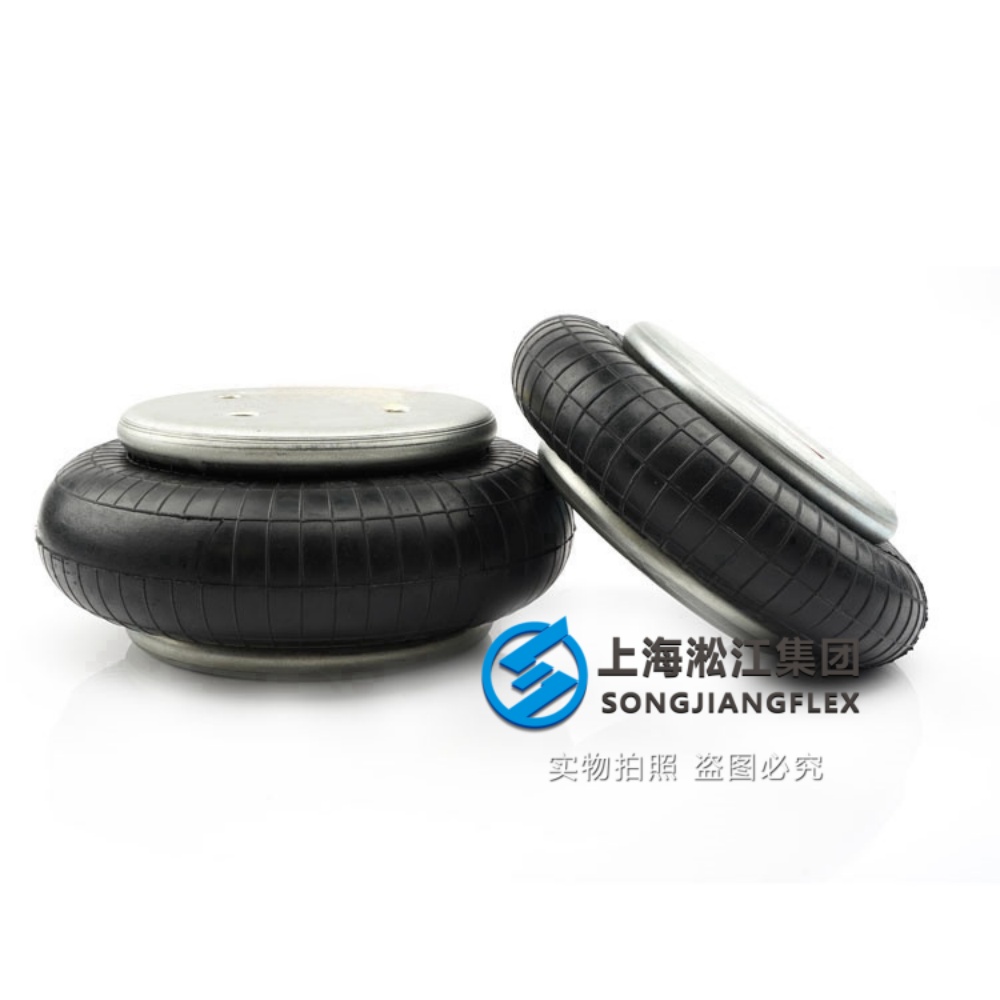How Do Air Springs Ensure Stability in Precision Instruments and Servers?
Precision instruments and servers are highly vibration-sensitive. Even the slightest disturbance can cause errors. Air springs vibration isolators provide the stability needed for accuracy and reliable performance, ensuring that critical measurements and data processing remain consistent in laboratories, industrial setups, and server rooms. With advanced pneumatic designs, they adapt to load changes while maintaining a steady platform for sensitive equipment.
Air springs in pneumatic vibration isolation systems reduce external disturbances, stabilize precision instruments, and improve server reliability. Their low natural frequency and adaptive control ensure precise results and long-term operational stability. In high-end laboratories, these systems allow optical and electron microscopy, semiconductor testing, and photonics research to achieve repeatable and accurate outcomes without interference from environmental vibrations.
Let’s explore how air spring isolators enhance accuracy and stability across multiple applications.
1. Why Do Precision Instruments Depend on Air Springs for Accuracy?
Precision instruments such as microscopes, optical systems, and semiconductor testing devices are extremely sensitive to vibration. Even micro-level shocks can compromise their accuracy, resulting in incorrect measurements or failed experiments.
Precision air spring isolators protect vibration-sensitive instruments by minimizing transmission of external shocks. This ensures test data and measurements remain accurate, preventing costly experimental errors. In medical diagnostics, high-precision metrology, and nanotechnology research, the stability offered by air springs is essential for reproducibility and reliable results. Precision air spring isolators support setups where sub-micron level vibration could otherwise disrupt experiments.
Instruments used for laser interferometry, advanced optics, and high-resolution imaging cannot tolerate instability. Air springs, with their pneumatic damping properties, reduce micro-vibrations and provide a stable operating platform. This capability is vital for ensuring repeatability and precision in scientific and industrial research environments, and it enables researchers to push the limits of measurement accuracy.
2. Air Springs vs. Traditional Springs: Which Offers Better Isolation?
Buyers often compare air springs with rubber or metal coil isolators to evaluate which performs better in demanding conditions. Traditional springs can suffer from resonance, limited adaptability, and uneven damping performance under varying loads.
Air springs offer superior pneumatic vibration isolation compared to metal springs. They feature lower natural frequency and automatic load adjustment, minimizing resonance and ensuring higher stability. The adaptive behavior of air springs makes them ideal for environments with fluctuating weights or dynamic equipment movements.
Traditional coil springs are prone to resonance and limited in adaptability. Rubber mounts help but lack the precision needed for critical instruments. Air springs combine flexibility with superior damping, making them ideal for high-precision applications. Their pneumatic design allows adjustable stiffness, ensuring they outperform conventional isolators in demanding environments. Industries including electronics manufacturing, aerospace testing, and precision instrumentation increasingly rely on air springs for reliable results.
3. How Do Air Springs Work in Vibration Isolation Systems?
Understanding the working principle of air spring vibration control helps engineers see their full potential in critical setups. Air springs use compressed air to create a flexible support that isolates vibrations in multiple directions.
Air springs work by using compressed air to achieve low natural frequency and six-degree-of-freedom isolation, effectively dampening vibrations from all directions. This allows equipment to maintain precision even in rooms with external vibrations from HVAC systems, foot traffic, or nearby machinery.
Each air spring acts like a pneumatic suspension system. By adjusting internal pressure, it can accommodate varying loads while maintaining constant performance. The ability to isolate vibrations in multiple axes makes air springs unique compared to rigid mounts, offering high efficiency in noise and vibration reduction. Engineers can calibrate the pneumatic pressure to achieve precise damping, ensuring that sensitive equipment operates under optimal stability conditions.
4. Where Are Air Springs Used in High-Precision Testing?
High-precision testing systems often demand unmatched stability for valid results. Air springs are widely used in precision measuring equipment, laser interferometers, electron microscopes, and advanced communication test systems. Their role in preventing vibration-induced errors is crucial for scientific discovery and industrial quality assurance.
In metrology labs, even minimal environmental vibrations affect accuracy. Rubber air isolators in testing machines integrated into testing platforms ensure stable data. Applications include optical alignment, photonics research, and nanotechnology experiments, where air springs help achieve error-free testing and long-term reproducibility. These isolators allow complex devices to operate under conditions that would otherwise introduce measurement noise, enhancing the reliability of research and production outcomes.
5. How Do Air Springs Improve Server Stability and Reliability?
Modern IT and AI-driven servers run continuous workloads, where stability directly affects performance and data security. Vibrations in server rooms can lead to mechanical wear, overheating, and unexpected downtime.
Air spring isolators reduce vibration interference in IT equipment, protecting hardware integrity and ensuring consistent server reliability. In server racks, they act as buffers, absorbing vibrations from floor movement, cooling systems, or nearby machinery. This contributes to higher uptime and reduced maintenance costs for critical computing infrastructure.
Unwanted vibrations in server racks can cause overheating, data processing errors, and shortened component lifespan. Air springs provide effective vibration control in server rooms, ensuring stable hardware operation. This is crucial for applications like financial systems, cloud services, and AI computing where uninterrupted performance is critical.
6. What Role Do Air Springs Play in Data Centers and Cloud Computing?
Data centers are the backbone of digital infrastructure, where performance and uptime are critical. Air springs ensure vibration-free environments for data centers and cloud servers, safeguarding sensitive equipment and minimizing downtime. They help maintain operational consistency, which is vital for large-scale computing operations.
In large-scale server farms, heavy cooling systems and power fluctuations can generate vibrations. Data center vibration isolation using air springs reduces these effects, enhancing equipment durability and performance. As cloud computing expands globally, pneumatic vibration solutions will play an increasingly important role in maintaining reliable IT operations. Integrating air spring isolators with smart monitoring systems allows predictive maintenance and better operational planning.
7. What Are the Key Benefits of Pneumatic Vibration Isolation?
Engineers and procurement managers want clear benefits before investing in air spring solutions. Pneumatic vibration isolation offers high efficiency, adaptive load handling, and extended equipment lifespan, outperforming traditional isolators in demanding environments.
By lowering vibration transmission rates, air springs increase productivity, reduce downtime, and extend machine lifespan. They adapt to dynamic loading, making them versatile across various industries. For companies investing in precision equipment, pneumatic isolation ensures a better return on investment by reducing costly maintenance and failures. The combination of stability, longevity, and adaptability makes air springs a cost-effective choice for modern high-tech applications.
8. What Is the Future of Customized Air Springs in Precision Engineering?
With evolving industry needs, customization and smart control have become key trends in vibration isolation. Customized air spring isolators integrate smart sensors and automatic pneumatic controls, shaping the future of precision vibration management.
Future air spring systems will adopt IoT-enabled monitoring for real-time vibration tracking, auto-adjusting pressure control, and predictive maintenance features. These advancements will make air springs more intelligent and adaptable, meeting the demands of next-generation laboratories, IT infrastructure, and precision engineering sectors. As precision demands increase, customized pneumatic vibration solutions will be essential for maintaining accuracy and reliability in cutting-edge applications.
Summary
Air spring isolators deliver superior vibration control for precision instruments and servers, ensuring accuracy, stability, and reliability in today’s most demanding applications. Their adaptive pneumatic design supports both laboratory precision and large-scale IT infrastructure, safeguarding critical operations.






